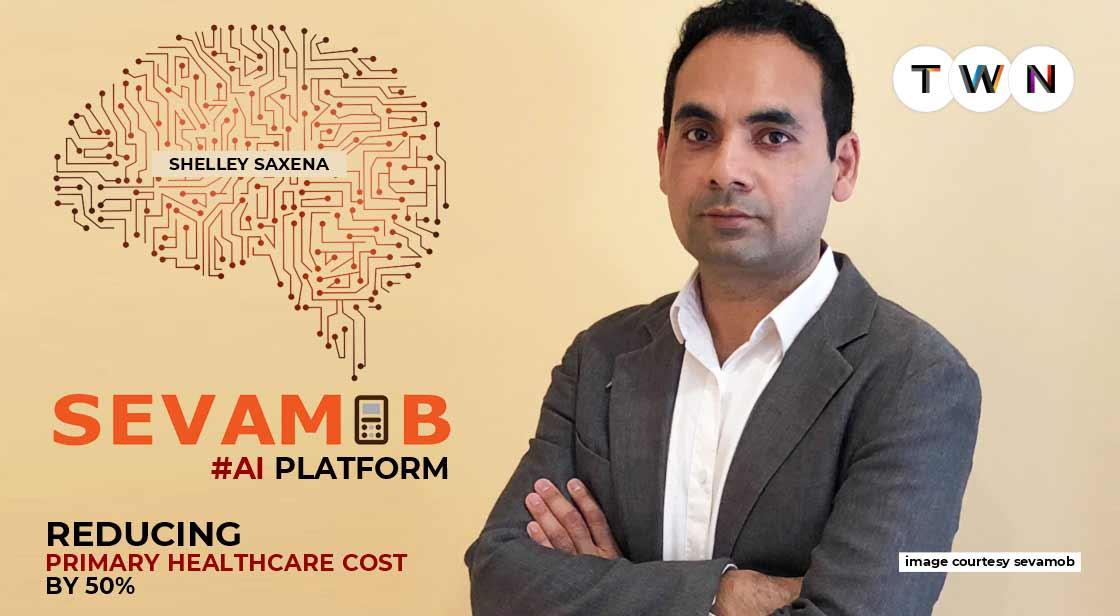Shelley Saxena Introduces Artificial Intelligence in the Medical Field

Blog Post
Sevamob was founded five years ago by an alumnus of IIT, Roorkee. Shelley Saxena not only entered the entrepreneurial world but bridged the gap between medical healthcare and artificial intelligence. The story of Sevamob is quite interesting as it came into existence after experiencing a personal loss. Join us and know about how Sevamob is giving tough competition to rivals with the help of AI in healthcare. Know what are the thoughts of Shelley Saxena about Sevamob. #TWN
India's life expectancy is 14-18 years lower than many developed countries. In India, a lack of primary healthcare, especially in smaller villages and cities outside of major urban areas, leads to poor health outcomes and a shorter life expectancy. To tackle this issue, Shelley Saxena stepped up to bridge the gap between the medical sector and the rural or tier 3 cities. All this happened due to a situation that changed everything. This article will talk about the origin of a revolutionary platform that goes by the name of Sevamob.
Story Behind Sevamob
Shelley Saxena tells his amazing story, which led to the foundation of Sevamob. Let’s know a bit about him.
He was born in Lucknow, India, and graduated with honors from the Indian Institute of Technology, Roorkee. After graduation, He worked in IBM product development for a variety of products before earning an MBA from Cornell. Following my MBA, He worked in various product groups at IBM, doing product management, channel, and go-to-market work. In 2010, He co-founded a profitable cloud-based mobile technology startup.
Sevamob was founded five years ago as a result of an incident with his mother. She was misdiagnosed with Hepatitis C and nearly died as a result. If it could occur in a Tier 2 city in India, he realized it was even worse in Tier 3 and rural areas.
So, he began a primary healthcare service in rural areas and quickly transitioned to a more sustainable B2B model. Sevamob gradually expanded to 15+ Indian states and 1 US state, adding various types of rapid diagnostics, specialized services, and telehealth. They also conducted tests in southern Africa. We decided to venture into artificial intelligence about two years ago to fill some gaps that could not be filled by off-the-shelf products.
How did Sevamob innovate?
They basically had two types of innovations.
1. Product Innovation
This entails utilizing technology to provide more primary healthcare services at the point of care in low-resource settings while also cutting the cost of those facilities. Major product innovations are:
- Triage and point-of-care testing for blood, vision, urine, sputum, and diet using AI. This requires little training for health workers to use and work offline in low-resource settings. This increases nurse productivity and allows them to provide services that would normally require a specialist.
- A platform for the video consultation process and second opinions in telehealth. This enhances physician availability in underserved populations.
2. Process Innovation
Their hybrid primary care model is scalable, replicable, demands very little capital investment, and can cover a much wider coverage area. When compared to the fixed clinic model, a medical team in this group model can serve 3-4X the number of patients.
How did COVID Affect Sevamob and Its AI implementation in Private healthcare?
The Covid-19 pandemic has been beneficial to the company. It received 18+ new agreements for Covid amenities, including preventative measures, awareness, assessment, testing, treatment/referral, and tracking, since April 2020.
Sevamob quickly realized that they needed to pivot in order to survive. It accelerated the use of telehealth and added onsite Covid services to reduce risk and enhance availability. Sevamob simultaneously reduced its operating expenses and set up a line of credit for an emergency. In the next five years, the company plans to expand its presence in South Asia and recreate it in Sub-Saharan Africa. Sevamob is also in the process of obtaining necessary permits for its AI technology, which will allow it to be used more widely, including in countries such as the United States.
The Competitors of Artificial Intelligence Implementing Company in the Medical Field.
According to the CEO Shelley Saxena, the main competitors of Sevamob are:
- Sigtupl – AI tech providers
- Practo – Healthcare IT providers
- Last-mile clinics
Sevamob has a decent competitive advantage over these companies. They have reduced the cost of primary care by up to 50% by combining artificial intelligence with telehealth and expandable last-mile service delivery. Their AI is quick and point-of-care, works in low-resource setups, that can be used by a nursing assistant or technician.
Also, Sevamob has filed four artificial intelligence patents.
Examples of Sevamob AI in Healthcare
Sevamob has currently five AI models working for them:
- Sputum AI – It analyzes sputum samples, and this analysis is generally used for the screening of tuberculosis.
- Blood AI – It analyzes blood samples with nothing more than a smartphone and a simple microscope. It is generally used for testing anemia of different types.
- Vision AI – This AI tech screens for medical conditions related to vision with a smartphone & fundus camera. This is used for diabetic retinopathy and cataract.
- Urine AI – This AI tech analyzes urine samples and does the screening for pus cells, calcium oxalate crystals, and RBCs.
- Diet AI – This AI model can easily predict mineral and multivitamin deficiencies and can recommend you a full plan of exercise. diet, and stress reduction activities.
Also Read: Phool: The Smell of Sacred Flowers
Conclusion
Shelley Saxena noticed the gap between the private healthcare sectors and the rural areas where medical facilities are almost dead. This amalgamation of medical healthcare and artificial intelligence is what gave Sevamob the upper hand over all other competitors. In the future, we can hope that Sevamob can bridge the gap and make lives a bit easier.
You May Like
EDITOR’S CHOICE












